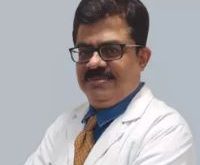In a groundbreaking leap for sickle cell disease (SCD) care in India, the country is simultaneously pushing the frontiers of high-tech gene therapy and rolling out ultra-affordable diagnostic tools, as part of its ambitious mission to eliminate the disease by 2047.
Gene Therapy Enters Indian Labs
For decades, treatment for sickle cell anaemia in India has largely revolved around hydroxyurea, blood transfusions, and pain management. But that era is quietly shifting. Behind closed doors in Indian Council of Medical Research (ICMR) labs and Council of Scientific and Industrial Research (CSIR) facilities, scientists are working on India’s first indigenous CRISPR-Cas9-based gene therapy. If successful, it could spell a near-cure for the genetic condition that afflicts millions, particularly in tribal and underserved regions.
“Gene therapy isn’t just a treatment—it’s liberation. In trials abroad, patients who once lived on painkillers and transfusions are now free of crises for years. India needs this urgently, and we are not far behind.” said Dr Roshan Dikshit, Senior Consultant- BMT, Aakash Healthcare.
The therapy works by editing the faulty beta-globin gene responsible for misshaping red blood cells. Unlike traditional management methods, this form of gene therapy reprograms a patient’s own stem cells, which, once reinfused, produce healthy red blood cells for life. While the therapy has already been commercialized in the US and UK under names like Casgevy and Lyfgenia, India’s approach aims to lower cost barriers—possibly bringing the price tag down from Rs 2 crore to under Rs 30 lakh per patient.
The urgency for such innovation cannot be overstated. Nearly 1 in 10 individuals in some tribal belts of Maharashtra, Chhattisgarh, and Odisha carry the sickle cell trait. For many, recurrent strokes, chronic fatigue, and bone damage begin in childhood.
“There’s a dangerous underestimation of how SCD affects the brain,” warned Dr Praveen Gupta, Chairman, Marengo Asia International Institute of Neuro & Spine (MAIINS), Chief Clinical Strategy, Growth and Innovation, North India Region, Chief Mentor for Start-ups, Marengo Asia Hospitals, Gurugram, “We are seeing silent cerebral infarcts even in kids under 12. Gene therapy may be the only way to prevent long-term cognitive damage.”
The therapy is still in preclinical stages, with human trials likely to begin by early 2025. Yet the optimism among India’s medical community is unmistakable.
PCR Test Revolutionises Early Detection
While gene therapy looms on the horizon, perhaps the bigger game-changer—at least in the short term, is a tiny test tube.
In 2024, CSIR scientists announced a PCR-based rapid diagnostic test for sickle cell anaemia that requires just a pinprick of blood and costs under Rs 100. Validated across Rajasthan, Madhya Pradesh, and Chhattisgarh, the test delivers near-perfect accuracy without the need for high-end hospital infrastructure.
“This could be the holy grail of point-of-care testing. It’s cheap, fast, reliable and mobile. Current standard tests—like HPLC—are expensive, slow, and often out of reach for rural population. With PCR, we can now diagnose a child in a school in Gadchiroli as quickly as we could in a Delhi hospital” commented Dr. Sunita Kapoor, Director& Laboratory head, City Xray.
The PCR test, on the other hand, is being integrated into large-scale screening campaigns under the National Mission to Eliminate Sickle Cell Anaemia, launched in 2023. Over 1 crore people have already been screened under the programme.
Doctors say that when a baby is diagnosed with sickle cell disease at birth through newborn screening, they get a crucial head start.
“We can begin simple yet powerful steps such as giving penicillin, ensuring they receive key vaccinations, and providing support and guidance for the whole family—all within the first few weeks. Starting early can mean fewer hospital visits, less pain, and a healthier childhood.” said said Dr Sweta Lunkad, Consultant – Hemato Oncology & Bone Marrow Transplant Physician, from Jupiter Hospital Pune.
Government health workers are being trained to use the new tool, and mobile vans equipped with thermal cyclers are now operational in several tribal districts. In Nagpur, over 130,000 people were screened in a single drive, identifying 267 full-blown cases and issuing sickle cell ID cards to help patients access follow-up care.
Still, challenges persist. Many patients are diagnosed late—after irreversible damage has already begun. “Diagnosis is just step one. We need long-term care plans, counselling, and a system that ensures no child falls through the cracks after a positive test.” said Dr Arushi Agarwal, Consultant- Pediatric Hematology& Oncologist from Asian Hospital.
Two-Pronged Battle, One Shared Goal
India’s strategy to defeat sickle cell anaemia is no longer hypothetical. It is becoming visible, in clinics, in tribal schools, in remote diagnostics vans, and in test tubes where gene editing is quietly reshaping futures.
The government’s goal is bold: to eliminate SCD by 2047, India’s 100th year of independence. With targeted therapies on one end and precision diagnostics on the other, that future may no longer be out of reach.
“Once we combine early detection with curative therapy, we won’t just treat sickle cell—we’ll outgrow it.”
 Newspatrolling.com News cum Content Syndication Portal Online
Newspatrolling.com News cum Content Syndication Portal Online







